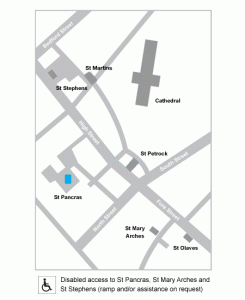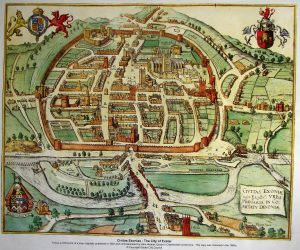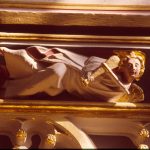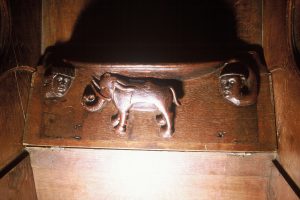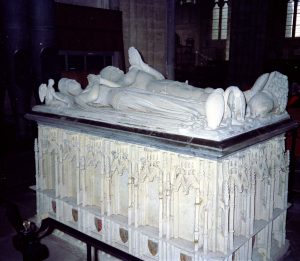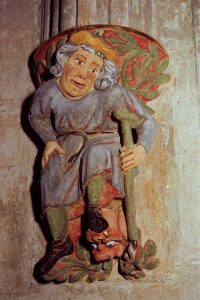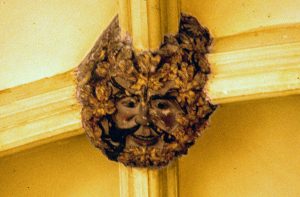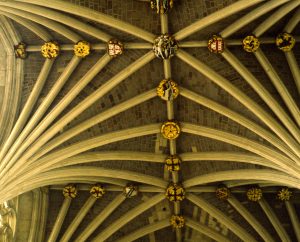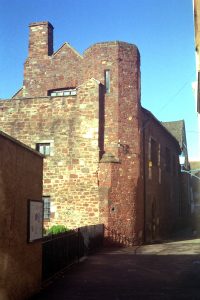 Monasteries play a role in all the books in my Lady Apollonia West Country Mysteries. In this posting, I would like to discuss several medieval monasteries in Exeter, site of my second book, Plague of a Green Man, set in 1380. Two priories and a friary occur in the story: Polsloe Priory, Saint Nicholas Priory, and the Exeter Greyfriars. The two priories have some remnants in modern Exeter, although those of Polsloe Priory are quite limited.
Monasteries play a role in all the books in my Lady Apollonia West Country Mysteries. In this posting, I would like to discuss several medieval monasteries in Exeter, site of my second book, Plague of a Green Man, set in 1380. Two priories and a friary occur in the story: Polsloe Priory, Saint Nicholas Priory, and the Exeter Greyfriars. The two priories have some remnants in modern Exeter, although those of Polsloe Priory are quite limited.
Polsloe Priory, sometimes known as Saint Katherines, was a Benedictine nunnery which I used in a chapter of my book describing a visit that Lady Apollonia makes with its prioress, who is modelled upon the Prioresse in Chaucer’s Canterbury Tales. I used this visit to help the reader understand something of the character of the Lady Apollonia through her interchange with the prioress. Today, just one building remains of the medieval priory which is used as a community centre.
Saint Nicholas Priory, shown above, was a Benedictine house founded in 1087. It enters my story as a place where Brandon Landow, the pardoner, found accommodation in Exeter after his return from the North of England. Earlier in the book, Landow had stayed at the Exeter Greyfriars but felt that he would not be welcome there again after an incident in which his foul play had been exposed. Today I know of no trace of the Greyfriars which had been founded by the Franciscan Order around 1300. The church and chapter house of Saint Nicholas Priory are also gone, but parts of the south and west ranges of the domestic buildings survive. The south range is now a museum owned by the city.
The Priory of Saint James and the Exeter Blackfriars existed at the time of my story but were not mentioned in it. The priory was founded in the 12th century by the Cluniac Order. The Blackfriars was a 13th century foundation of the Dominican Order. All the monasteries of Exeter were dissolved in the 1530’s by King Henry VIII, not to reform them but to take their wealth, so little of their facilities survive in modern times.
There were a couple of Saxon monasteries in Exeter, one of them connected with Exeter Cathedral but they had been dissolved by the middle of the 11th century, before the Norman Conquest and centuries before the Lady Apollonia’s time.
For more on Saint Nicholas Priory, click on
https://en.wikipedia.org/wiki/St_Nicholas%27_Priory,_Exeter
